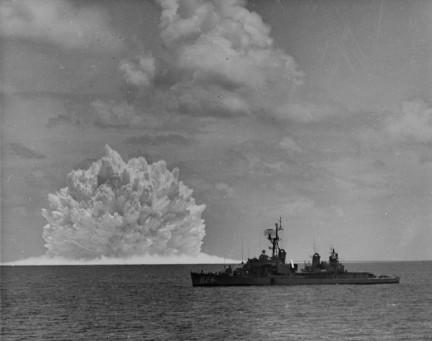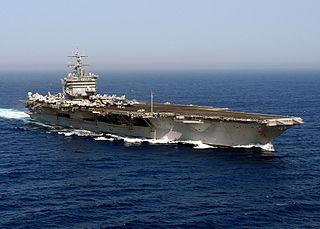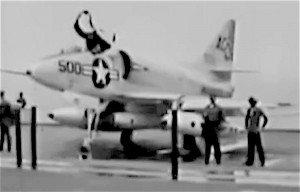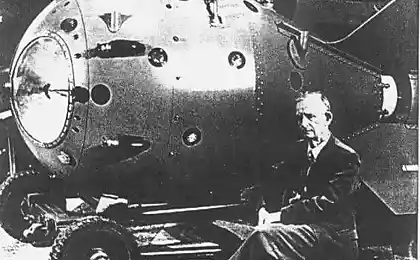801
Declassified: US nuclear weapons sea-based

Recently declassify interesting documents of the Cold War. Earlier Geektimes an article United States published a list of targets for a nuclear strike in the USSR , describing the essence of some of the declassified documents. Recently published no less interesting declassified document on the nuclear arsenal of the US Navy.
Federation of American Scientists (Federation of American Scientists [FAS]) published declassified documents on the disposition of US nuclear weapons during the Cold war, specifying scale preparation of the US Navy for nuclear war at sea.
Floating nuclear arsenal includes a wide range of weapons such as uncontrolled nuclear bombs for aircraft based on aircraft carriers (carrier-borne nuclear gravity bombs), nuclear anti-submarine depth charges, torpedoes with nuclear warheads, nuclear anti-submarine missiles, sea-based nuclear missiles "surface- surface "and submarine launched ballistic missiles.
The US Navy deployed a large part of its nuclear power in the Atlantic. By the 1970s, nearly a third of the US nuclear arsenal has been a sea-based. This number is slightly decreased with the end of the Cold War, both due to decommissioning of tactical nuclear weapons, and by reducing the total number of nuclear weapons in the US arsenal.
Hans Kristensen of FAS holds an interesting comparison of the data about the scale and placement of nuclear weapons with known cases of incidents involving nuclear weapons.

January 14, 1969 on the aircraft carrier USS Enterprise took heavy catastrophe, potentially threaten its arsenal of nuclear bombs and nuclear propulsion.
nuclear armed ships repeatedly clashed with each other and with their Soviet "colleagues».
The aircraft carrier USS John F. Kennedy November 22, 1975 collided with the cruiser «Belknap», whereby cruiser caught fire and almost sank. Both warships carrying nuclear weapons.
The article also describes cases of FAS clashes with Soviet surface ships and submarines carrying a nuclear weapon.

As well as the air force, navy lost a nuclear weapon. A-4 Skyhawk with a nuclear weapon rolled off from the aircraft carrier USS Ticonderoga in 1965 and disappeared in the abyss.
The submarine USS Scorpion May 27, 1968 sank with the crew and two nuclear torpedoes.
The Soviet and Chinese Navy also made extensive use of nuclear weapons on the sea, but little is known about the losses.
History of accidents demonstrates why many countries were concerned about the deployment of the US Navy from its shores during the Cold War. For example, New Zealand has banned visits to their ports of US warships, which led to diplomatic retaliation by the United States.
US withdrew tactical nuclear warheads from their ships shortly after the end of the Cold War, and soon ceased to use all the nuclear weapons on surface ships. Nevertheless, the US continues to maintain part warheads, for destruction.
In today's world, emerged maritime competition between China and the United States, is likely to lead to the return of nuclear weapons to the sea, but in the Pacific region. In the Atlantic, we should not expect a significant change in the situation, in spite of the political background and new military doctrine of Russia - since the cold war, the situation in Europe unchanged in the absence of the Warsaw treaty organization, the US has more comfortable and close land base, than the costly duty fleets on comparatively large distance.
On the other hand an increase in the number of nuclear weapons anywhere else on the part of the Russian Federation unlikely - «Russia has reduced its nuclear arsenal to a level late 1950s - early 1960s »
.
P.S. tags i> article copied from thematically similar publications.
Source: geektimes.ru/post/270582/























